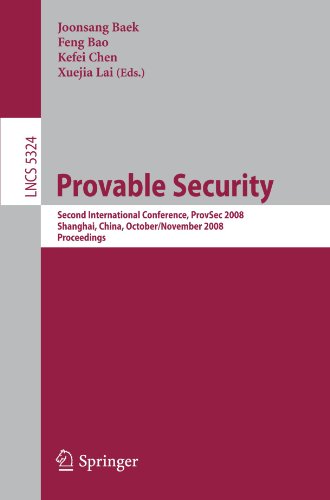

Most ebook files are in PDF format, so you can easily read them using various software such as Foxit Reader or directly on the Google Chrome browser.
Some ebook files are released by publishers in other formats such as .awz, .mobi, .epub, .fb2, etc. You may need to install specific software to read these formats on mobile/PC, such as Calibre.
Please read the tutorial at this link: https://ebookbell.com/faq
We offer FREE conversion to the popular formats you request; however, this may take some time. Therefore, right after payment, please email us, and we will try to provide the service as quickly as possible.
For some exceptional file formats or broken links (if any), please refrain from opening any disputes. Instead, email us first, and we will try to assist within a maximum of 6 hours.
EbookBell Team

4.8
94 reviews
ISBN 10: 3540887326
ISBN 13: 9783540887324
Author: Joon Sang Baek, Feng Bao, Kefei Chen
This book constitutes the refereed proceedings of the Second International Conference on Provable Security, ProvSec 2008, held in Shanghai, China, October 30 - November 1, 2008. The 25 revised full papers presented were carefully reviewed and selected from 79 submissions. The papers are organized in topical sections on Encryption, Signature, Analysis, Application of Hash Functions, Universal Composability, and Applications.
provable security
aws provable security
another look at provable security
the provable security of ed25519 theory and practice
on the provable security of (ecdsa signatures
Tags: Joon Sang Baek, Feng Bao, Kefei Chen, Security, Provable